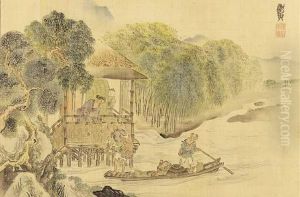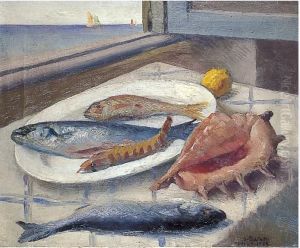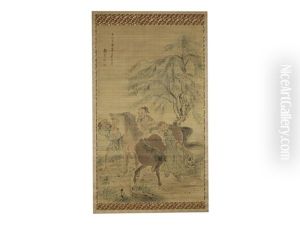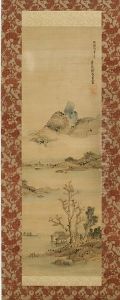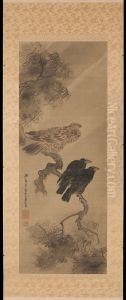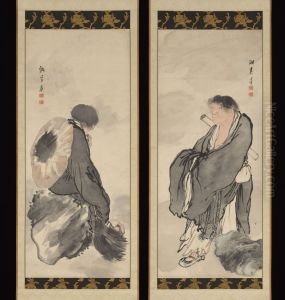Yosa Buson Paintings
Yosa Buson, also known as Yosa no Buson or Taniguchi Buson, was a Japanese poet and painter of the Edo period. He is well known for his involvement in the development of the haikai (also known as haiku) genre of poetry and is considered alongside Matsuo Bashō and Kobayashi Issa as one of the greatest poets of the haiku form. Born in 1716 in the village of Kema in Settsu Province (present-day Osaka), Buson moved to Edo (modern-day Tokyo) in his early twenties to study haiku under the tutelage of Hayano Hajin.
After Hajin's death, Buson traveled extensively throughout the northern provinces of Japan, a journey that influenced his poetry significantly. In 1751, he settled in Kyoto and began to study painting under the guidance of the Chinese-influenced painter Ishikawa Masanobu. Buson's painting style, like his poetry, was noted for its evocative beauty and adherence to the ideals of literati painting (bunjinga), which emphasized personal expression and technical virtuosity. His landscapes are particularly revered and are considered some of the finest examples of Japanese painting from the Edo period.
During his lifetime, Buson produced a large body of work that includes both poetry and painting. His poetry is characterized by its rich imagery, emotional depth, and connection to the natural world. He was adept at capturing the essence of a scene or moment in just a few short lines, the hallmark of the haiku form. As a painter, Buson's work ranged from detailed figures to bold landscapes, with a mastery over brushwork that gave his paintings a dynamic and immediate presence.
Buson's work was not limited to his own creations; he also contributed to the preservation and study of classical Japanese poetry. He compiled anthologies, wrote critical works, and produced a renowned corpus of calligraphy. After his death in January 1784, Buson's students compiled the first anthology of his poetry, which helped to cement his legacy as a master of the haiku form. His influence continues to be felt in the world of Japanese poetry and painting, where his works are still studied and admired for their lyrical beauty and technical precision.
